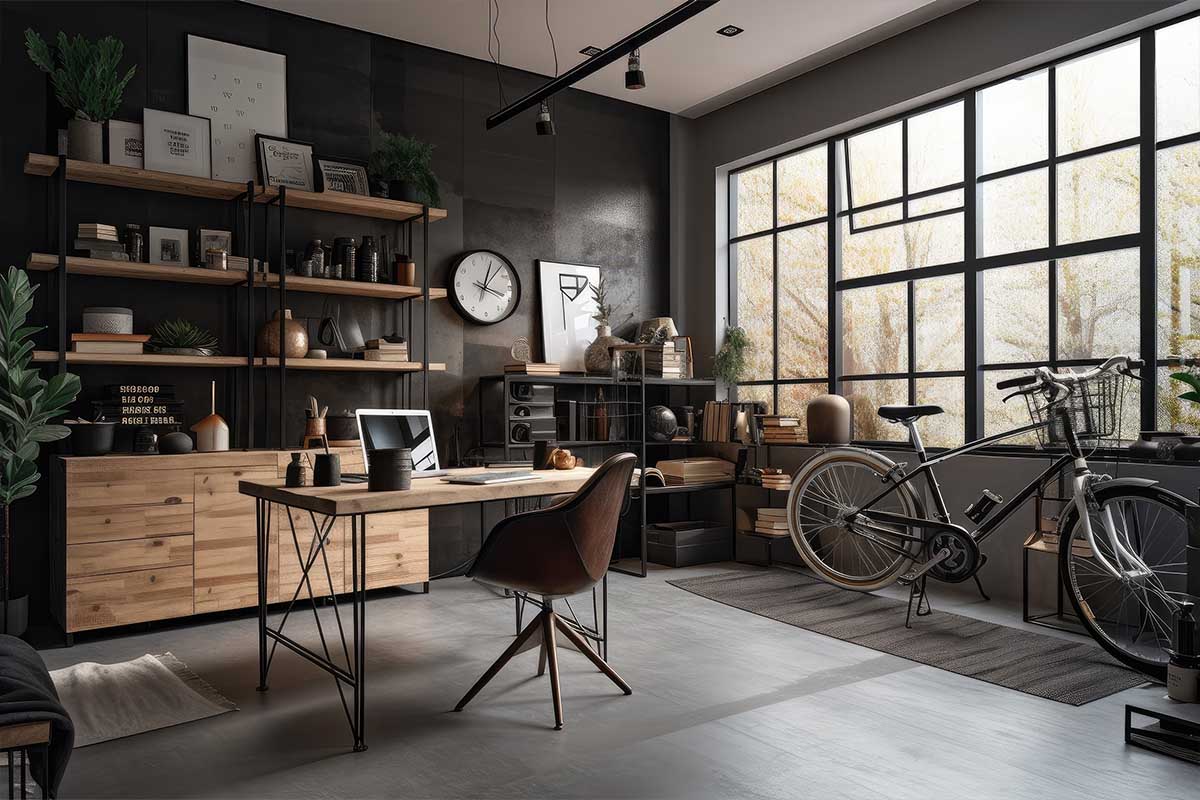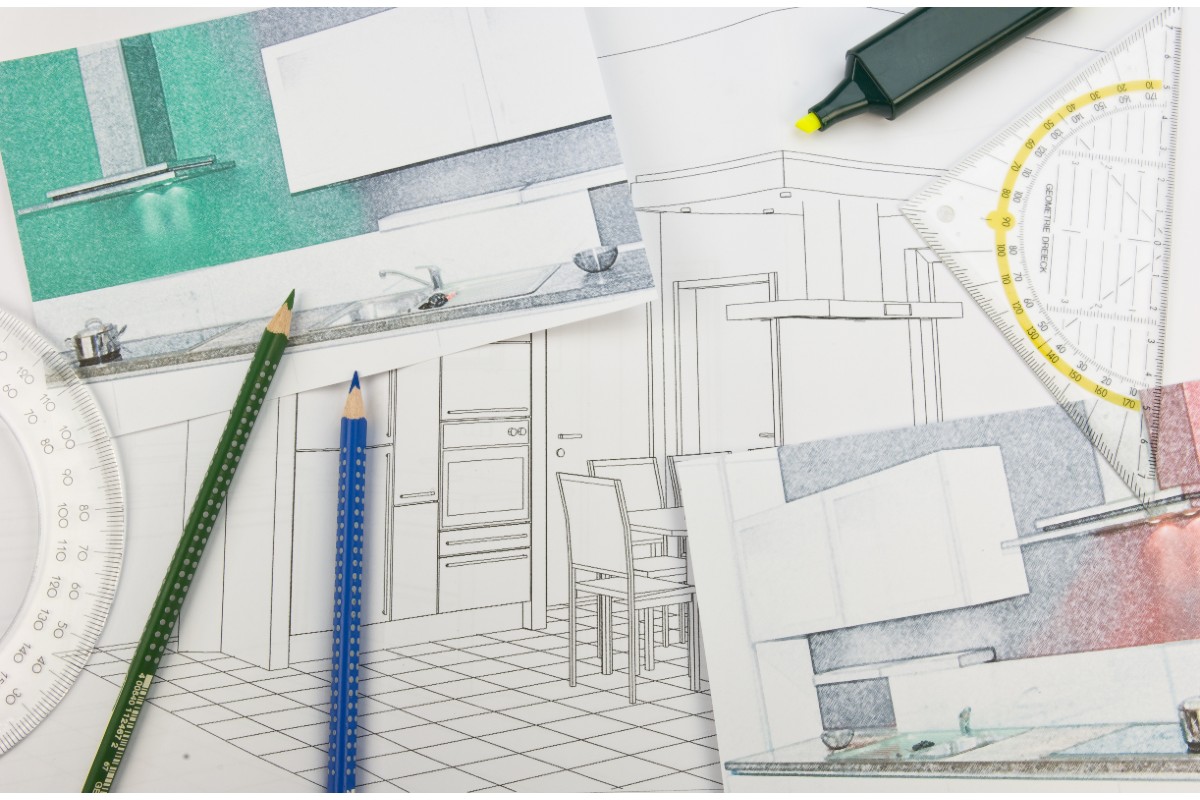If you are renovating a house, the biggest money saver is doing the renovation in the correct order. A home renovation often starts with excitement, then turns into a long project once hidden problems appear, especially in an old...
What is the Biggest Size Garage I Can Convert Without Planning Permission?
- Kitchen
- |
- September 26, 2025

A garage conversion is one of the most popular ways to transform an underused part of a property into something functional and attractive. Many homeowners wonder: what is the biggest size garage I can convert without planning permission? The answer lies in whether your conversion falls within the boundaries of permitted development rights, and whether you intend to alter the size or external appearance of your garage.
A garage conversion is one of the most popular ways to transform an underused part of a property into something functional and attractive. Many homeowners wonder: what is the biggest size garage I can convert without planning permission? The answer lies in whether your conversion falls within the boundaries of permitted development rights, and whether you intend to alter the size or external appearance of your garage.
Understanding Planning Permission for Garage Conversions
Planning permission is the legal consent required for certain types of building work or changes to a property. With most garage conversions, you will not need planning permission if you are keeping within the confines of the original garage. The process becomes even more complex if you plan to enlarge, extend, or alter the structure's external appearance.
The good news is that converting a garage into living space is often treated as an internal alteration. For the majority of homes, this means you will only need to satisfy building regulations rather than make a full planning application. Even so, your local planning authority may have restrictions, so it’s always worth checking before starting a conversion project.
The Role of Permitted Development Rights
Permitted development rights are a set of rules that enable homeowners to undertake certain improvements without needing to apply for planning permission. They are designed to make small-scale improvements easier, such as loft conversions, extensions, and garage conversions.
If your property still retains full development rights, then converting your garage into a habitable room should fall under these rules. However, there are exceptions: houses in a conservation area, flats, maisonettes, or a listed building may not benefit. Always confirm whether your rights remain in place, as previous owners or the local council may have removed them.
Typical Size Limits for Garage Conversions
So, what is the maximum size garage you can convert without planning permission? The simple answer is that the size limit is set by the footprint of the existing garage. Whether you have a single garage or a double garage conversion in mind, as long as the conversion project remains within the existing walls, you generally do not need additional permission.
This means you cannot enlarge the footprint of the garage to create more space without making a planning application. Instead, the project must focus on transforming what is already there into habitable space. The original garage, therefore, dictates the scale of the conversion.
Detached Garage Conversions
A detached garage is a slightly different case. If the detached garage is considered an outbuilding separate from the main house, then converting it into a new room might not always fall under permitted development rights. This is because some councils treat the change of use from an outbuilding to a habitable room as more significant.
It is therefore crucial to speak with your local authority before starting. If your detached structure sits close to the boundary of your property, or if you plan to change its roofline or cladding, then you may well require planning permission. Each situation is unique, so early clarification is essential.
Building Regulations for Garage Conversions
Even if you do not need planning consent, every garage conversion project must comply with building regulations. These regulations ensure that the new habitable space is safe, warm, and energy efficient. Areas such as insulation, fire protection, ventilation, and drainage are all subject to scrutiny.
Meeting these standards requires careful planning. For example, garage conversion wall insulation, upgraded garage floors, and roof insulation may all be needed. Without such upgrades, the converted garage would not be suitable as a liveable space, and your application for building regulations approval could be refused.
Building Regulations Approval Process
There are two ways to seek building regulations approval: a building notice or a full plans submission. A building notice is quicker, but it means the inspector will make checks as the building work progresses. A full plans submission involves detailed drawings and is often preferred for larger or more complex conversion projects.
Inspectors will assess everything from the finished floor level to the adequacy of the damp proof membrane. They will also review ceiling height, insulation, and any reports provided by structural engineers. Passing these checks gives peace of mind that your newly converted space is safe, compliant, and fit for use.
Converting a Garage into Valuable Living Space
When designed well, a garage conversion transforms what might be wasted space into valuable living space. Many homeowners choose to create a home office, an ensuite bedroom, or even a playroom. Because the conversion uses the existing footprint, it is often more cost-effective than building a full extension.
The key is to design the new room so that it blends seamlessly with the main house. A dream conversion should blend seamlessly into the property, rather than feeling like a secondary space. This makes it more enjoyable to live in and enhances long-term property value.
Garage Conversion Cost Considerations
The garage conversion cost can vary significantly depending on size, specification, and location. A single garage conversion may start from around £7,000–£10,000, while a double garage conversion could cost £15,000–£25,000 or more. Premium finishes, such as underfloor heating or bespoke joinery, can raise the budget further.
It is also important to factor in hidden costs. These include upgrading insulation, adding a floating floor, improving the garage roof, or ensuring the correct finished floor level relative to the main house. Comparing this against the price of an extension shows why conversions are often seen as a more cost-effective option.
DIY Garage Conversion vs Professional Builders
A DIY garage conversion might seem appealing if you are confident with diy projects, but there are risks involved. Even a small diy garage conversion project must comply with building regs, and any mistakes can become costly to rectify. Poorly installed insulated plasterboard, missing damp proof membrane, or inadequate ventilation can cause long-term issues.
By contrast, hiring master builders ensures a quality garage conversion that passes inspection first time. Professionals will also be familiar with building control requirements and can manage the process on your behalf. For most homeowners, this peace of mind is well worth the investment.

The Importance of Garage Door Removal
One of the first steps in converting a garage is removing the old garage door. This is typically replaced with a new wall and windows to match the main house. Getting the design right is crucial because it has a big impact on the external appearance of the property.
A poorly matched façade can make the new room look like an afterthought. Instead, a carefully designed finish creates a seamless new space that blends into the existing house. This is one of the details that distinguishes a dream conversion from a basic project.
Managing Floor Level in a Garage Conversion
The floor level in a garage is often lower than that in the rest of the property. To create a consistent finished floor level, you may need to raise the floor using a floating floor system. This also provides an opportunity to add insulation and a damp-proof membrane.
Care must be taken to maintain adequate ceiling height after the floor is raised. The correct approach will depend on the condition of the garage floors and the external ground level around the property. An experienced builder or surveyor can guide you through the best solution.
Garage Roof and Ceiling Height Issues
Many garages have a flat roof, which may not provide sufficient insulation or support. In such cases, upgrades or even replacement may be needed to comply with building regs. Similarly, roof insulation is critical to ensure the newly converted space is comfortable year-round.
You must also pay attention to ceiling height. If the garage has a particularly low roof, it may restrict what the new room can be used for. A minimum height is required for a liveable space, and failing to achieve this could limit the usefulness of the conversion.
Wall Insulation and Internal Layout
Installing wall insulation is essential to meet energy efficiency targets. This can be done with insulated plasterboard or stud walls with cavity insulation. These upgrades also help regulate temperature, making the space feel like part of the main house.
Creating internal walls allows you to divide the area into different zones. For example, part of the garage could remain as storage space while the rest becomes additional living space. Thoughtful design ensures every part of the garage space is put to good use.
Heating, Cooling, and Ventilation
A converted garage must feel like a proper room rather than an afterthought. Extending your central heating system is one option, while many homeowners prefer the comfort of underfloor heating. Whatever the choice, it is vital to plan for both heating and cooling.
Adequate airflow is also essential. Adding trickle vents to windows or fitting mechanical ventilation ensures healthy air quality. Together with insulation, these upgrades make the room a comfortable and healthy place to spend time.
Creating Extra Living Space with a Double Garage Conversion
A double garage conversion provides ample scope for creating extra living space. This could be a self-contained ensuite bedroom, a spacious home office, or even a family cinema room. Because of its larger footprint, the opportunities for design are much greater than with a single garage.
By carefully integrating the conversion with the main house, the new room becomes a natural extension of your lifestyle. This makes a double garage conversion one of the most effective ways to unlock additional living space without altering the structure of the property.
Maintaining Character of the Main House
A successful conversion should complement the existing house. This means matching external finishes, rooflines, and windows where possible. A dream conversion blends seamlessly, so that the property looks as though it was always designed that way.
Attention to detail is key. From the choice of bricks to the alignment of windows, everything should echo the style of the main house. By working with master builders, you can achieve a finish that enhances kerb appeal as well as functionality.
Fire Safety and Building Control Checks
Building control plays a vital role in ensuring fire safety standards are met. This may include installing fire-resistant internal walls, using specialist doors between the main house and the garage, and ensuring safe escape routes. These measures protect occupants and are a legal requirement for creating a habitable space.
Failing to meet these standards could prevent your conversion from being signed off. More importantly, it could place your family at risk. Fire protection should always be seen as an essential part of the conversion project, not an optional extra.
When You Do Need Planning Permission
Although most garage conversions are straightforward, there are a few different factors that may mean you’ll need planning permission. For instance, if you live in a listed building, you will always require consent before making changes. Similarly, properties in a conservation area may have restrictions on altering external appearances.
Other situations include plans to enlarge the garage space, increase its height, or alter the roof. In these cases, you must submit an application to the local planning authority. Your local council can confirm what applies in your specific case.
The Role of Structural Engineers in Conversions
In some situations, structural engineers are required. This is particularly the case if you are removing load-bearing walls, altering the garage roof, or if the existing structure is in poor condition. Their expertise ensures the building work is safe and meets all legal requirements.
Bringing in a structural expert may add to the garage conversion cost, but it also reduces the risk of problems in the future. It’s a small investment for peace of mind in a significant conversion project.
Making the Most of Your Garage Conversion Add
There are a few different ways to use your newly converted space. For some families, it becomes a home office. For others, it is the perfect place for an ensuite bedroom, gym, or studio. By tailoring the design to your lifestyle, you can create a valuable living space that improves everyday life.
A well-planned conversion doesn’t just add extra space; it adds genuine functionality. Done properly, a garage conversion can become the most cherished part of your home.
Maximising Space Without Planning Permission
So, what is the biggest size garage you can convert without planning permission? The answer is simple: as large as your existing garage allows. Whether it’s a single garage or a double garage conversion, as long as the conversion project stays within the footprint of the original garage and complies with building regulations, you usually do not require planning permission.
That said, circumstances vary. Always check with your local authority and work with experienced master builders to ensure a safe, compliant, and cost-effective outcome. A well-executed conversion turns wasted space into valuable living space, providing comfort and long-term value for your home.
The Conversion Guy - A Trusted Garage Conversion Specialist in Derbyshire & Staffordshire
Are you ready to take the plunge and transform your garage into a warm, welcoming living space? Well, look no further! The Conversion Guy is committed to providing you with a garage conversion experience that is unparalleled.
With over 40 years of experience in garage conversions, we are looking forward to helping you turn your garage into a functional and beautiful space! We love talking conversions, so be sure to get in touch today or book a free consultation and start your journey towards a more spacious, versatile home.
From the Learning Centre
Explore our resources and learn about pricing, bathroom refits, kitchen kitchen renovations, loft conversions and many other home improvements in our Learning Centre








